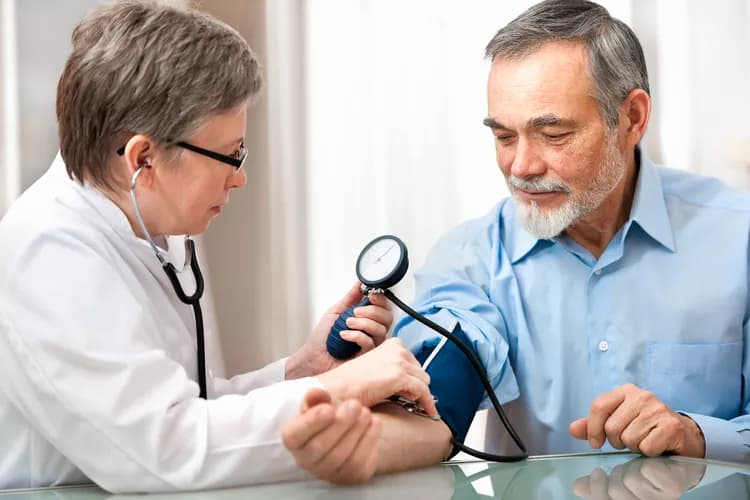
Lowering Systolic Blood Pressure Would Save More Than 100,000 Lives Per Year, Study Finds
Intensive treatment to lower systolic (top number) blood pressure to below 120 would save more than 100,000 lives per year in the United States, according to a study led by Loyola University Chicago researcher Holly Kramer, MD, MPH.
Two thirds of the lives saved would be men and two thirds would be aged 75 or older, according to the study, which was presented at the American Heart Association's Council on Hypertension 2016 Scientific Sessions. Current guidelines recommend keeping systolic blood pressure below 140 mm Hg.
"When the treatment goal was lowered to a maximum of 120 mm HG, there was a huge reduction in mortality," said Dr. Kramer, the study's first author. "Few other medical interventions have such a large effect."
Dr. Kramer is an associate professor in the Department of Public Health Sciences and in the Division of Nephrology and Hypertension in the Department of Medicine of Loyola University Chicago Stritch School of Medicine.
To determine whether intensive treatment to lower systolic blood pressure could alter mortality, Dr. Kramer and colleagues applied findings from a multicenter study called SPRINT to the U.S. adult population. (SPRINT stands for Systolic Blood Pressure Intervention Trial.)
Loyola University Medical Center was among the centers that enrolled patients in the SPRINT trial, which included more than 9,350 adults ages 50 and older who had high blood pressure and were at high risk for cardiovascular disease. The SPRINT trial found there was a 27 percent reduction in mortality from all causes when systolic blood pressure was lowered to below 120 mm Hg, compared to the standard care of lowering blood pressure to below 140 mm Hg.
While saving lives, an intensive blood pressure regimen also would cause serious side effects. The study by Dr. Kramer and colleagues estimated that approximately 55,500 more episodes of low blood pressure, 33,300 more episodes of fainting and 44,400 additional electrolyte disorders would occur annually with implementation of intensive systolic blood pressure lowering in U.S. adults who meet SPRINT criteria. Most of these effects would not be expected to have lasting consequences and would be reversible by lowering blood pressure medications, Dr. Kramer said.
High blood pressure, or hypertension, is a leading risk factor for heart disease, stroke, kidney failure and other health problems. An estimated 1 in 3 people in the United States has high blood pressure. Blood pressure is measured in millimeters of mercury (mm Hg). Systolic blood pressure refers to the pressure in the arteries when the heart beats. The bottom number, diastolic, refers to the pressure between beats.
In the SPRINT study, patients who were treated to achieve a standard target of less than 140 mm Hg received an average of two different blood pressure medications. The group treated to achieve a target of less than 120 mm Hg received an average of three medications. (The study excluded certain patients, including diabetics and smokers.)
Using data from the National Health & Nutrition Examination Survey, researchers determined that more than 18.1 million American adults met the criteria of patients enrolled in the SPRINT trial. Dr. Kramer and colleagues estimated that, among these 18.1 million adults, fully implementing an intensive regimen to lower systolic blood pressure below 120 mm Hg would prevent approximately 107,500 deaths per year.
The above post is reprinted from materials provided by Loyola University Health System. Note: Content may be edited for style and length.
Disclaimer: DoveMed is not responsible for the adapted accuracy of news releases posted to DoveMed by contributing universities and institutions.
Related Articles
Test Your Knowledge
Asked by users
Related Centers
Related Specialties
Related Physicians
Related Procedures
Related Resources
Join DoveHubs
and connect with fellow professionals

0 Comments
Please log in to post a comment.